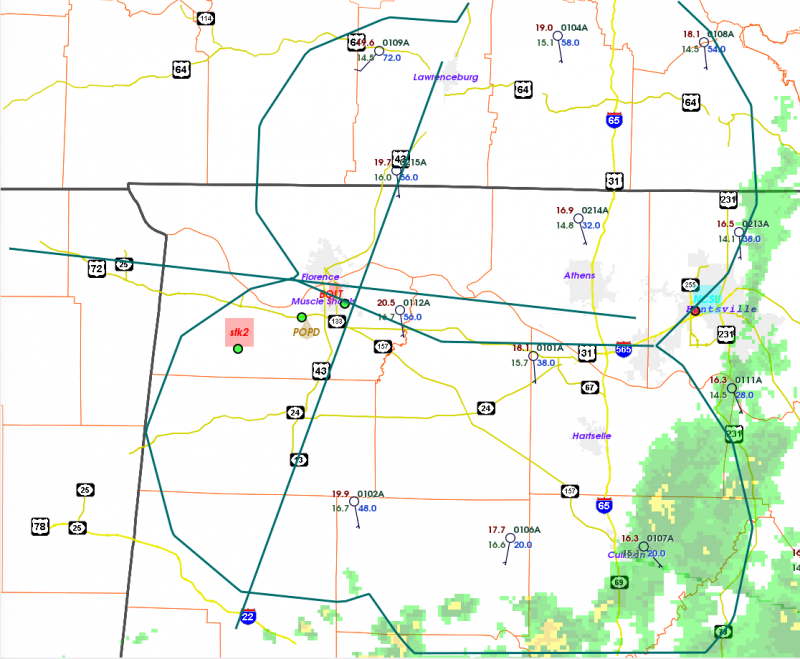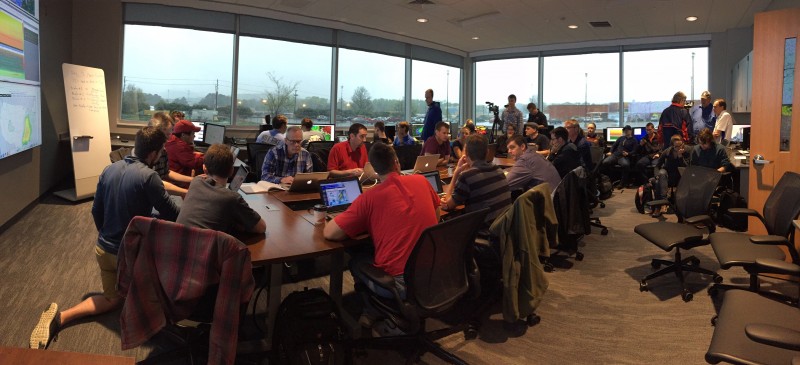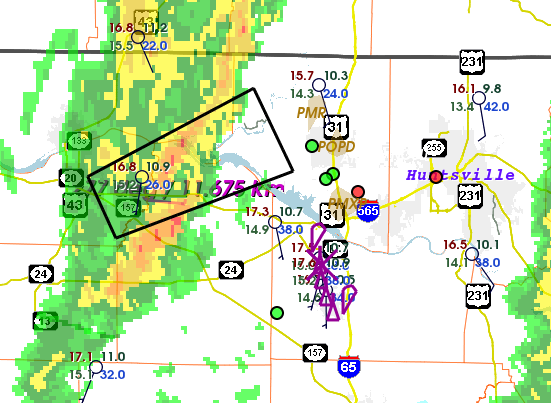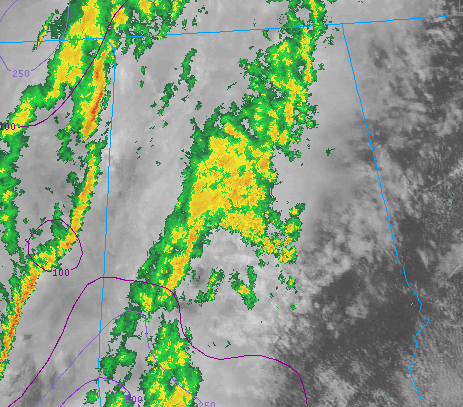Teams are mostly in place and waiting for storms. The deployment plan looks like this:

The domain shown here is northwest Alabama and far southern Tennessee and NE Mississippi. Huntsville AL is in the middle-right part of the figure. A few showers linger to the south and east of the domain, but the weather is currently tranquil across the study area. In this graphic, the two lines crossing near Florence AL are a north-south array of sounding systems that will launch soundings about once per hour from five sites, and an east-west array of three systems. This should help us study the rapid return of warm, humid air from the south as the current convective system departs. There are four overlapping circles within which we will have dual-Doppler coverage. The smaller two areas in the west part of the domain are covered by a combination of the UAH MAX X-band mobile dual-polarization radar, and the Purdue/UMASS XPOL radar. Their “baseline” is the short line segment extending from the WNW to the ESE in the northwest part of the domain. The two larger areas in the east part are covered by the combination of MAX and UAH ARMOR C-band radar, with a nearly east-west baseline illustrated.
The surface observations that are seen in this figure are the Texas Tech “Stesonet”… 16 sticknet instruments deployed in a mesonet that is collecting data 24/7 throughout our 2-month campaign. An additional set of Sticknets is in a mobile vehicle that is now sitting out toward the MS border, awaiting a clearer idea of where the most significant storms will pass. Similarly, the deployable disdrometer instruments from Purdue are sitting stationary and awaiting storms.
The MAX radar began collecting data about 20 min ago, and the Purdue/UMASS radar will commence data collection shortly.
This experiment has been designed around the general idea that an old outflow boundary from this morning’s convection will possibly lift northeast toward, or even across, the domain during the afternoon, with an attendant increase in low-level shear and possibly convective initiation. Later, toward sunset or shortly thereafter, storms are expected to move eastward into the domain. The structure of this system remains to be seen… it could be anything from supercells to a QLCS (quasi-linear convective system), to a band with embedded supercell structures.



